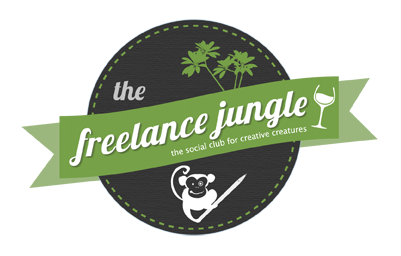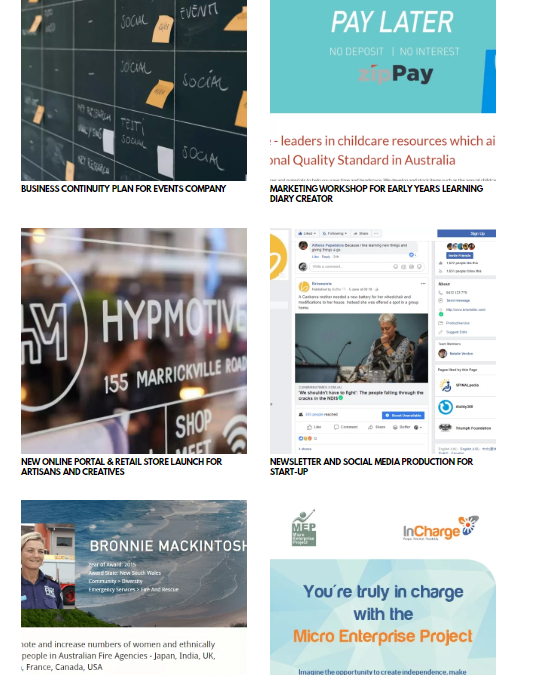Having a freelance portfolio is a great idea. But how do you have a freelance portfolio if you are only starting out? Or if you work on projects that are done under agency or department banners that might not allow for you to share them as your work?
It’s a common problem you can find as a freelancer. Most people complete the work, take the pretty pictures and add it to the freelance portfolio section of their website.
But if you can’t do that for whatever reason, here are a few things you can do to have a freelance portfolio in lieu of direct client work
Negotiate well
A lot of the default position of agencies and government departments is to not let you disclose you have worked for them. It’s written in their terms and conditions.
But that doesn’t mean you have to accept that as the final answer.
You’re legally allowed to negotiate the terms and conditions of any agreement. That also includes work disclosure.
One way you can add work to your freelance portfolio without it being a huge issue for the client is to negotiate for disclosure on a ‘needs basis’.
Put simply, maybe you don’t have that great project or agency logo on your website. But you clear with the client that you can disclose details of the project (without names or logos if they insist) to like-minded clients in discreet settings.
Basically, this means you can talk about the project if it’s relevant to getting you work and treated in a sensitive fashion.
An email saying that is OK to do is sufficient. Your job is to make sure you abide by that and only mention the project as outlined between you and the client. E.g. only in meetings, without details and not adding it to your website or other forms of freelance portfolio.
It does sound like you meet behind the pillars of the big stone monument to discuss your work. But it is actually effective. Just make sure you get the permission in writing via that email. And that the new client understands it’s a discreet share, not fodder for their latest press release.
Pro tip: Use it as an opportunity to match the project to the need of the client. Freelancers can think sharing a big brand name is impressive. It’s not. Especially if it’s not related to the task at hand. What matters is that your skills align with the task at hand. By learning that the name of the company or their prestige plays second fiddle to the outcome and what you created, you learn better pitching techniques.
Run autopsies on projects
Part of what your freelance portfolio does is that you can demonstrate you know what you are doing. The proof is that you’ve done it before normally.
But if you don’t have that proof or you can’t supply it, there’s another way to crack the case study egg.
Demonstrate you know how things work by exploring the thinking that goes into them. Run autopsies and explorations of other campaigns in the media.
By breaking down marketing campaigns, deconstructing products and/or design, digging into SEO performance, analysing press and media – whatever it may be, you demonstrate what goes into making great projects.
The beautiful thing about running autopsies is that it can get you clients if you target it appropriately. Looking at what companies do well, what they can improve and being solution-orientated stands you head and shoulders above others.
A little critical thinking goes a long way!
Pro tip: Use a SWOT analysis to identify strengths, weaknesses, threats and opportunities. Make sure it is positive, solution-orientated, not a whine fest and has actionable points people can activate for remedy. Nobody cares if you want to tell them where they got it wrong. The world is full of armchair critics who can do that. They want to know your see the full picture.
Create your own creative projects
Creative freelancers have an advantage to most people in creative professions. We own all our own tools and call the shots on how we spend the time. There’s nothing wrong with you using some of that time to create projects for your freelance portfolio.
Treat it like a creative prompt project. Look at the work that is out there. The advertising that missed the mark, the long-forgotten tagline well overdue for a revival, the government messaging that needs all the help it can get- all kinds of inspiration is available.
You can even enter creative competitions for the work for your freelance portfolio. Gift them to companies. Challenge them on Twitter. Send your work out into the world.
We’re seeing a lot of that with people fixing the messaging around coronavirus for example. Where language of social isolation exists, there are communications experts saying physical isolation might be better. They’re rewriting government messaging. They are designing posters to encourage us to cover our mouths or wash our hands.
This isn’t the first time this sort of stuff has been useful and put people on the map. Check out the different iterations of appreciation of Disney by Japanese artists. Check out the people who have redesigned book covers for their favourite novels. Heck, even FanFic for TV shows is an example of people taking the creativity further.
You can also do a version of this by including your own opportunities. For example, if you spearhead a community social media group, use it. Or if you have spoken at events, add that to your freelance portfolio. Align yourself with projects, people and communities that matter to other people.
Or set yourself up with a position of authority via your own content, vlogging, blogging or podcast making. What you are trying to demonstrate is that you are applied and knowledgeable. Leading the field with your own projects says that in spades!
Pro tip: Make use of trends to bring your work to more people on social media. If you are talking about current events, use the terms and the tags to go viral. Be a part of the collective conversation that creates the art. Tie it into a movement towards appreciating, educating and exploring marketing, art and messaging.
Volunteer your time
In arts and in NFPs, there are opportunities to volunteer your time and add that work to your freelance portfolio.
You can find various different volunteer roles and projects on commercial jobs boards, in the NFP sector, across emergency and study situations, or through sticking close to the newsletters of your favourite organisations or member areas.
You can also find pitching a project can sometimes get you somewhere.
Pro tip: In all things volunteer, make sure you have a clear and set brief as you can often get over-enthusiastic and lose time and brain space to unwieldy projects. The enthusiasm we have for projects can sometimes overtake our time and creativity in ways we may not anticipate. So, having that brief agreed upon- and referring back to it on a regular basis, helps a lot! Oh, and make sure the role is legal by understanding the standards required for volunteer roles in Australia. Arts and NFP bodies are regulated differently to startups, agencies, and other companies when it comes to who can and can’t volunteer. And how it’s conducted.
Use case studies in your freelance portfolio
A freelance portfolio with a couple of pretty screen shots of past projects is nice to look at. But it doesn’t answer the questions your client has.
Your clients care about what the outcome was. They want to know the results. They also care about the details of how you came to the project and the impediments to success you overcame across the way.
That’s why you should take a more proactive approach about case studies than your competitors. Especially when you have less of them to draw on. Add the why, how, when, where, inspiration, micro detail, elements, creative techniques and what made the project special.
Tell the story on how your client came to you with a brief and you triumphed through a solution and a desirable outcome.
Pro tip: Take a baseline on the statistics attached to a project when you start. Take them again when you finish. Take before and after shots. Make sure potential clients can see the progress via analytics, sales reports, visual transformations and more. Make sure the outcome is the star of the show.
Enjoy refreshing your freelance portfolio. Want more tips on your freelance career? Check out our blog.

